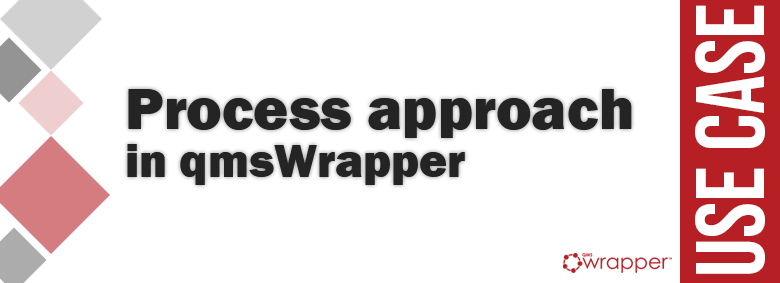
Process approach in qmsWrapper
QMS standards are based on the process approach which means - any activity that receives input and converts it to output can be considered as a process.
There are many ways to describe the process approach:
A process is a set of inter-related activities that use resources (people, machines, etc.). If you look at it closely, every organization is made up of a series of interacting processes. For a company to function effectively, it should identify and manage linked processes (nonconformity reporting, CAPA, audit management, etc.).
So, systems consist of processes, and processes are made up of tasks. When scheming and implementing a QMS, this hierarchy of systems, processes, and tasks is important to help deploy an effective and compliant QMS. But it can easily become a complex system with way too many processes, that’s why qmsWrapper has an option to use diagram/flowcharts to allow you to better visualize the input-output relationship.
A flowchart is seen as a diagram that is used to represent a workflow, process, or system. It shows the individual process steps or activities. qmsWrapper uses them to give an easy-to-understand overview of workflows that are many times complex and their interrelation of activities.
qmsWrapper is built to support the processes approach. It comes with already included processes that address QMS requirements. Therefore, processes are defined through the flowcharts as the sequence of tasks or templates that are that can be assigned to specific users, depending on the process.
We like to say that processes implement SOPs through a series of events in a sequence where one triggers another assuring nothing is left behind. Workflow processes define the steps needed to complete a set of Quality requirement tasks – without missing a step.
So how does it work in qmsWrapper: By creating a new process you will give a name to your event or a process, describe it, and simply checkmark it if it falls under the QMS category or not; as one of the auxiliary options, there is a tag field as well. And now chart editor is opened up for you to create and organize steps however you want it. From ‘start’ to ‘end’ elements with the various shapes and colors that represent different Issues types are available to match your needs. All elements/your steps are connected by Triggers since one step should trigger another, and let the process flow.
Remember every step represents one your input that should let to the wanted output.
The company members are automatically included in the compliance process, as processes will automatically include them in whatever compliance issue is necessary and at what point it is necessary, including identifying what form to complete and what to do with it.
The implementation of processes ensures that every step is tracked, documented, validated, and approved.
qmsWrapper also calls this approach the Management Through Quality (MTQ). The Management Through Quality compliance is different because the focus is not on quality as the end game, but rather on quality as the process to achieve compliance. MTQ means as your team members complete their tasks, they trigger QMS events that get automatically reported to the QMS system where managers can oversee the progress in qmsWrapper.
